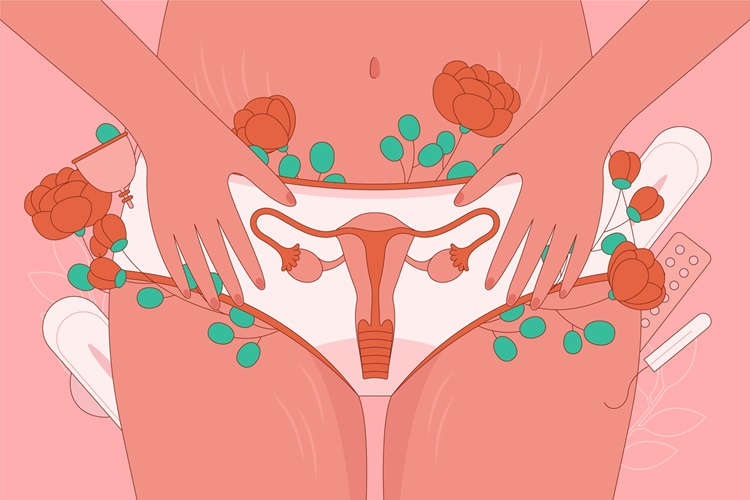Addressing Emerging Issues and Regional Perspectives in Sexual and Reproductive Health
Based on the introductory discussion of sexual and reproductive health (SRH), this extended analysis examines emerging challenges, regional disparities, and new approaches to promoting SRH equity. This article identifies critical areas requiring immediate attention, from the convergence of climate change and SRH to the distinctive challenges of conflict areas.
The Impact of Climate Change on Sexual and Reproductive Health in Regions
- Climate emergencies have a disproportionate impact on SRH, especially in vulnerable populations.
- Natural disasters overwhelm healthcare systems, restricting access to maternal health services, contraceptives, and STI services. For instance, following Cyclone Idai in Mozambique in 2019, 55% of health facilities were destroyed, increasing maternal mortality (1).
- Climate-related displacement also raises the risk of GBV and child marriage. In Bangladesh, increased sea levels have led to families marrying off daughters at a young age to save money (2).
The Relationship between Mental Health and Sexual and Reproductive Health
- Mental health is directly intertwined with SRH. Depression, anxiety, and PTSD may be caused by trauma from gender based violence (GBV), unsafe abortion, or stigma around infertility (3).
- A 2023 paper published in The Lancet estimated that 35% of women denied abortion care in restrictive US states experienced long-term psychological distress (4, 5).
Incorporating mental health interventions into SRH programs, like counselling for postpartum depression or violence survivors, is essential to comprehensive care.
Telehealth and Access to Sexual and Reproductive Health Services
- Telemedicine has increased access to SRH, such as tele-paternity check, online prescriptions of contraception, but the digital divide leaves behind marginalised populations.
- In rural India, 34% of women have internet access compared to 55% of men (6).
The gap must be bridged through affordable connectivity and digital skills training for women and girls.
Regional Disparities in Sexual and Reproductive Health
Sub-Saharan Africa
- Maternal Mortality: Nigeria alone contributes to 25% of all maternal deaths worldwide (7).
- Child Marriage: 37% of girls are married before they are 18 years old, curbing education and exposing them to pregnancy risks (8).
- HIV Epidemic: Adolescents in Eastern and Southern Africa account for 80% of new HIV infections worldwide (9).
- Progress: Initiatives like Kenya's Free Maternal Healthcare Policy have increased facility deliveries by 20%. Mobile clinics in Malawi provide HIV testing and contraceptives to remote villages (10).
Latin America and the Caribbean
- Abortion Restrictions: Despite Argentina's landmark legalisation in 2020, abortion remains illegal in El Salvador, Honduras, and Nicaragua, pushing women to unsafe methods.
- Teen Pregnancy: The second-highest rate of adolescent pregnancy in the world is seen in the region, fueled by a lack of CSE and cultural taboo (11).
- Progress: Abortion until 24 weeks was decriminalised in Colombia in 2022, whereas Uruguay's CSE programs have lowered teen pregnancies by 40% over ten years.
Asia
- Son Preference: Sex-biased sex selection in China and India has distorted sex ratios, reinforcing gender inequality (12).
- Contraceptive Access: In Pakistan, only 30% of women use modern contraception due to misinformation and male opposition (13).
- Progress: Nepal's community-based female health volunteers distribute contraceptives and educate women in rural areas.
Conflict Zones and Humanitarian Crises
In war-torn regions like Yemen and Ukraine, SRH services collapse. A 2023 UN report revealed that 1 in 5 displaced women experience sexual violence, and 60% of maternal deaths occur in fragile states.
Organisations such as Médecins Sans Frontières (MSF) send emergency SRH kits with delivery equipment, condoms, and STI medication to crisis zones.
Innovative Solutions and Grassroots Advocacy
Community-Led Interventions
- Brazil's Mães de Lua: Amazonian indigenous midwives offer culturally appropriate maternal care, decreasing hospital mortality rates by 50%.
- Uganda's Peer Educators: HIV-positive teenagers mentor teens to encourage safe sex and decrease stigma.
Feminist Movements and Policy Change
Grassroots organisations are leading legal changes:
- Poland's Women's Strike: Prolonged mass protests against abortion prohibition in 2020 forced the government to ease restrictions in 2023.
- Mexico's Marea Verde: The "Green Wave" movement has decriminalised abortion in 12 states since 2021.
Corporate Accountability
- Activists are pushing drug companies to reduce the costs of contraceptives. In 2022, the Clinton Health Access Initiative secured a 50% price cut for contraceptive implants in 15 African nations.
The Future of SRH: Key Recommendations
- Climate-Resilient SRH Services: Roll out SRH into climate adaptation plans, including mobile clinics in disaster-risk areas.
- Youth-Focused Programs: Involve young people in developing SRH apps and campaigns (e.g., Zambia's Zambedo sexual health chatbot).
- Male Involvement: Educate men as supporters of SRH through programs like Promundo's MenCare program, facilitating shared responsibility for contraception and childcare.
- Data-Driven Policies: Utilise AI to create maps of SRH service gaps. Satellite imagery in Ghana finds villages without maternal health facilities.
Conclusion
Sexual and reproductive health is an ever-evolving space influenced by political, environmental, and cultural forces. Despite the systemic barriers, grassroots resilience, technological advancements, and international solidarity hold promise. Ensuring SRH is a moral priority and a strategic investment in more equitable futures. The executive director of UNFA, Natalia Kanem, said: “When women and girls can make choices about their bodies, they shape their destinies—and the world's.”By: Danial Umar ( Public Health Expert)
Edited by: Damilola Elewa










Comments (0)